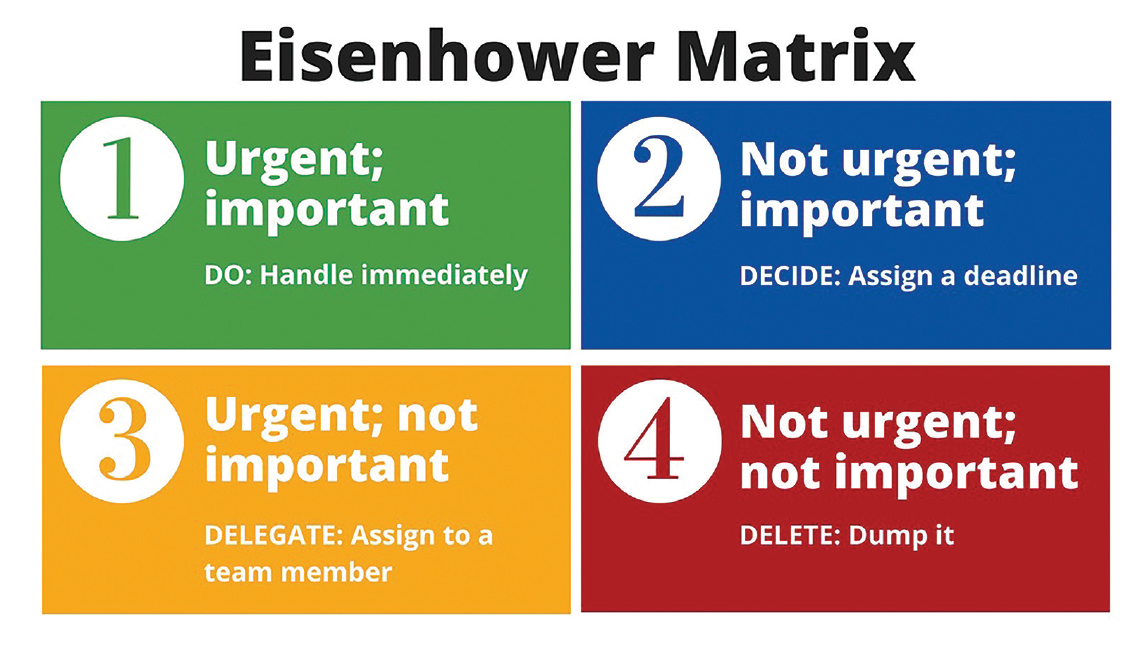Guest editorial
By Michael Thompson, Treasurer, Generation Next, Reading Truck Group
This article was published in the October 2018 edition of NTEA News.
Am I really a millennial? Sure, my birth year fits squarely at the start of the widely-accepted threshold for that generation (1985), but I don’t really feel like one. My formative years saw the beginning of the internet as a household tool, but I also remember using a Day Timer to record my homework assignments in elementary school. I love technology, but I balk at how it’s created so much distance between us (admit it — you, too, have emailed the person in the office next to you when you could’ve just gotten up and walked over). In spite of Outlook calendars, Google Docs, Evernotes, and other organizational tools making collaboration and schedules so readily available, the “old fashioned” way is more calming and effective, at least for me. One tool, in particular, that helped me immensely is a dry-erase board divided into four blocks — an Eisenhower Matrix.

The thought behind the matrix, created and used by General Dwight D. Eisenhower, is that most every task for which you could find yourself responsible can be divided into four categories, with differing priorities.
- Urgent and important: things I need to do immediately — fires that need to be put out
- Not urgent, but still important: things I need to do eventually, by a deadline
- Urgent but not really important: things I can delegate to other members of my team
- Neither urgent nor important: things I shouldn’t worry about at all
So, what does this all mean? The things I need to do immediately are mission-critical to the success of my business. My not urgent but still important tasks need to be done, but not today. These can have a deadline in the not-too-distant future. Our urgent but not important items don’t need my intimate participation, so I can delegate them to another capable person on my team knowing that, while I’m ultimately responsible for completion, I have help. Tasks that are not important or urgent are actually time-wasters, and shouldn’t be bothered with. I’ll take care of them in my free time.
It took me quite a while to admit this sort of forced organization is necessary. Being a naturally organized person, I didn’t think I needed additional help. However, with growing responsibilities at work and home, I’ve found that writing everything out, by hand, creates not only perspective but also accountability. Perspective is created when I stand back and take a good hard look at what’s before me and realize that, while there’s more work to do than I could shake a stick at, it’s manageable because not everything is a fire that needs to be put out. I get to hold myself accountable, too, because everyone who comes into my office can see my Eisenhower Matrix. Not only has it been a conversation-starter, it’s also been a way for teammates to know what I’m working on and see my progress. Being able to erase a task from the board after completion is a great feeling.
I share this only to give an example of what has worked for me. Whether or not an Eisenhower Matrix (or use of Evernote or even a Day Timer) will work for anyone else is simply a matter of personal preference. That said, we should seriously consider any tool that will assist in organizing our thoughts and the tasks before us, especially in the age of instant interaction.
Now if you’ll excuse me, there’s a fire I have to go put out.
For more resources, visit ntea.com/generationnext.